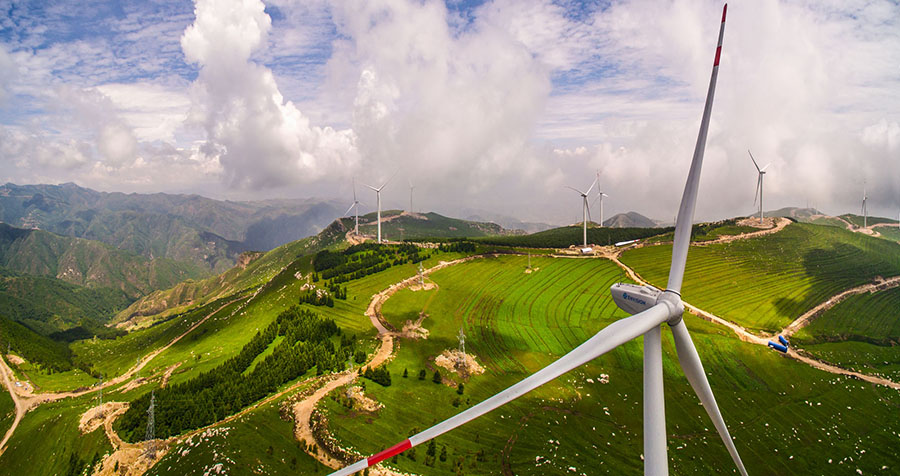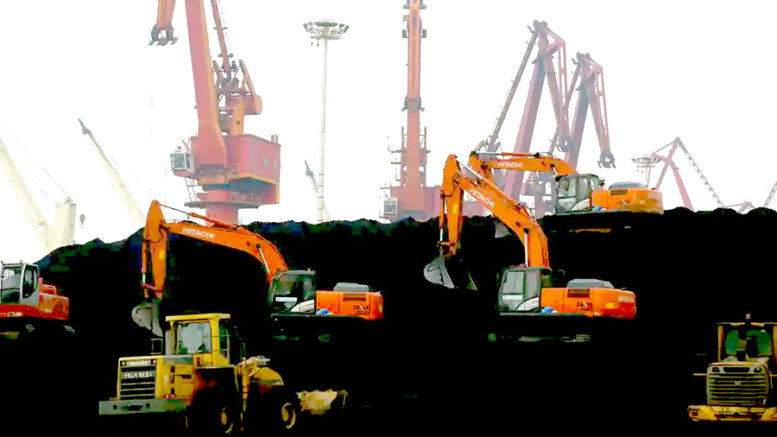Australia’s coal industry does not have a future. Public demand and the rapidly falling cost of renewables will eventually shut it down. But for a time, the industry has continued on the back of exports to China. Now this market is expected to close, as China’s need for Australian coal diminishes as its self-sufficiency and turn towards renewable energy accelerates. Alex Turnbull (The Guardian 11 June 2020) writes about what is unfolding.
The prevailing narrative is that the diplomatic and trade dispute between China and Australia is threatening coal exports and we should expect a return to business as usual once the spat ends.
Nothing could be further from the truth.
It is an historical accident that China became a large importer of coal, which China’s government has been seeking to correct since the global financial crisis. These efforts are bearing fruit and Australian coal exports will continue to suffer as China’s focus on producing more energy domestically displaces Australian exports.
Australian governments need to see the political logic from China’s point of view and accept that we cannot expect China to import and burn coal it no longer needs. From there we can better formulate our own economic outlook and transition programs for affected communities.
It’s important to put Chinese coal imports from Australia in perspective. China consumes around 3.2 billion tonnes of coal a year, of which only 267 million tonnes are imported.
China’s thermal coal demand can best be thought of as the off cuts of a much bigger energy market. These imports went from nothing to the levels they are today. as China’s growth in energy demand on the coast outstripped China’s capacity to move coal from its inland coal fields, to where the demand was.
In 2012 I attended a presentation by China’s central planning authority, the National Development and Reform Commission, outlining that they were not happy about this and were going to invest heavily in freight rail capacity to solve this problem. By 2015 the coal market was in free fall and Peabody filed for bankruptcy in 2016.
After a brief squeeze in the coal market driven by China’s efforts to get rid of smaller, more dangerous coalmines, Chinese coal output continued rising inland and rail capacity was completed that allowed more shipments to the coast. We are very much back to 2015 again today, with Peabody’s debt available for 50-60c on the dollar and coal prices back to 2015 prices.

China seems to be intensifying these efforts in its “blue sky war” to better use its own resources and push for more renewables in the sunny and windy western provinces, combined with ultra high-voltage power transmission to get it to the coast. This should reduce coal demand by about 18.4 percent by 2025, or more than four times what China imports, according to the State Grid Research Institute.
These plans have become more aggressive over time as the cost of renewables have fallen and China’s middle class values breathable air more than bragging about steel output numbers. There is no reason to expect any of those trends to change.

For Australia, which exports a quarter of its coking and thermal coal to China, this presents an enormous problem. Chinese imports of thermal coal could go to zero and likely will very quickly.
In addition, rail capacity expansion will force Australian coal to compete with high-quality Mongolian coking coal which has been stranded by poor logistics. A rail line connecting the Tavan Tolgoi coking coal complex will be completed in 2021 and allow China to import another 30 million tons of coking coal– which is almost exactly the amount that Australia exports to China. With a likely cost advantage and pricing advantage, it is hard to see how Australia will compete.
Coal boosters and lobbyists are quick to talk up India and the rest of Asia but in almost any market the sudden absence of Chinese demand is an almost impossible hole to fill.
India has its own collieries and is finding that renewables are now better value, and it is a smaller and slower growing economy. Taiwan, South Korea and Japan all have decarbonisation plans and are not going to be in any position to fill the hole left by 25 percent of the market demand going away in the shorter term and much more of it over the longer term.
For Australia the implications are obvious. We need to prepare for this shift and our policymakers need to stop misleading coal-mining areas and their communities on the outlook – China’s energy transition is moving fast enough to catch them out before the next federal election and they can expect a chilly welcome if they are found to have cynically boosted coal into its collapse while not having a plan B for these areas.
In light of these facts, the Adani mine political pantomime is absurd: if we are going to see that higher-quality mines with existing infrastructure face a crunch, what possible point could there be in building a lower-quality thermal coalmine in this market?
I suspect nothing will change, and it will take Australia being mugged by the reality of this shift before anything is done. It would be wise for political opponents to think about a transition plan for these communities ahead of time.
Like Covid-19, this is not an unforeseeable problem, but if we choose to ignore it, it will not go away.


Be the first to comment on "Australia cannot expect China to import and burn coal it no longer needs"